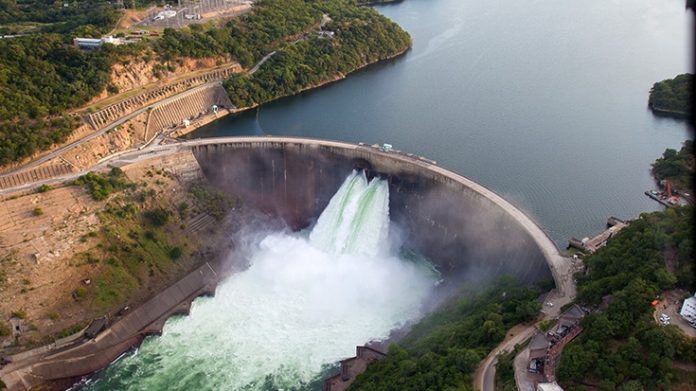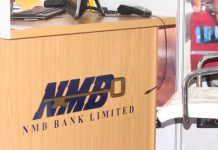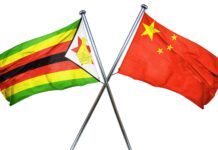Staff Writer
The Zambezi River Authority is maintaining the 42 Billion Cubic Meters (BCM) combined water allocation for power generation operations at Kariba despite water levels declining in the gigantic lake,
ZRA, in June this year, revised upward from 30BCM the combined water allocation for the Northern and Southern power stations in Zambia and Zimbabwe, respectively.
Zambia and Zimbabwe had, as August 31 this year, utilized 83 percent and 75 percent water allocation for power generation at Kariba.
The authority is a bi-national organization mandated to contribute to the economic, industrial, and social development of the Republics of Zambia and Zimbabwe.
This mandate is driven by obtaining the greatest possible benefits from the natural advantages offered by the waters of the Zambezi River through the most economical and effective means of providing water for generation of electricity and for other purposes.
In a statement, ZRA chief executive Engineer Munyaradzi Munodawafa said the Lake Kariba’s level continues to recede steadily, closing the period under review at 481.55m on September 1, 2021.
“From the last update made on 4th August 2021 when the recorded lake level was 482.16m, it has receded by 0.61m. Currently, the lake level is 6.05 meters above the Minimum Operating Level (MOL) of 475.50m.
“The recorded level of 1st September 2021 translates to 28.16 Billion Cubic Meters (BCM) or 43.45 percent of usable or live storage. Last year on the same date, the Lake level was lower at 480.48m with 22.94BCM or 35.40 percent of usable storage, with the water being only 4.98m above the Minimum Operating Level,” he said.
He said water allocation would remain the same because of the result of the second quarter review of the hydrological outlook at Kariba that considered the normal to above normal rainfall performance and associated increased inflows into Lake Kariba.
“As of 31st August 2021, ZESCO Limited had utilised 17.35 BCM of its 21 BCM water allocation (83 percent utilisation), while the Zimbabwe Power Company (ZPC) had utilised 15.72 BCM of its 21BCM water allocation (75 percent utilisation).
“This leaves a balance of 3.65 BCM and 5.28 BCM for ZESCO and ZPC, respectively, for utilisation during the remaining period of the year 2021,” he said.
The next quarterly hydrological review will be held at the end of this month.
Eng Munodawafa said this may result in either, maintaining, increasing, or reducing the volume of water allocated for power generation operations at Kariba for the year 2021.
The Annual meeting of regional weather experts, the Southern Africa Climate Outlook Forum (SARCOF), at the end of August this year and forecasts for Zambia and Zimbabwe predict a normal to above normal rainfall outlook for the SADC Region.
“The Authority has accordingly scheduled hydrological simulations that will inform decisions on the water to be allocated for power generation operations at Kariba for the year 2022,” Eng Munodawafa said.
He said daily water level readings recorded at Chavuma indicated continued receding, which is expected during this time of the year owing to the end of the 2020/2021 rainfall season.
The readings closed at 154 cubic meters per second (m3/s) as recorded at August 31, 2021.
“On the same date last year, the flow was slightly higher at 161 m3/s. This recorded recession in river flows is expected to continue until the start of the 2021/2022 rainfall season,” he said.
Flows as monitored at Victoria Falls Gauging Station are also receding are also receding owing to the close of the 2020/2021 rainfall season, closing the period under review at 482 m3/s, which is less than the reading of 512m3/s recorded last year.
The recorded river flows are projected to also continue receding until the start of the 2021/2022 rainfall season.

















